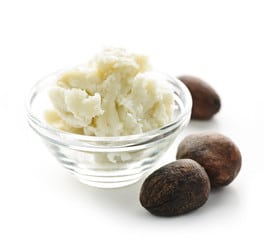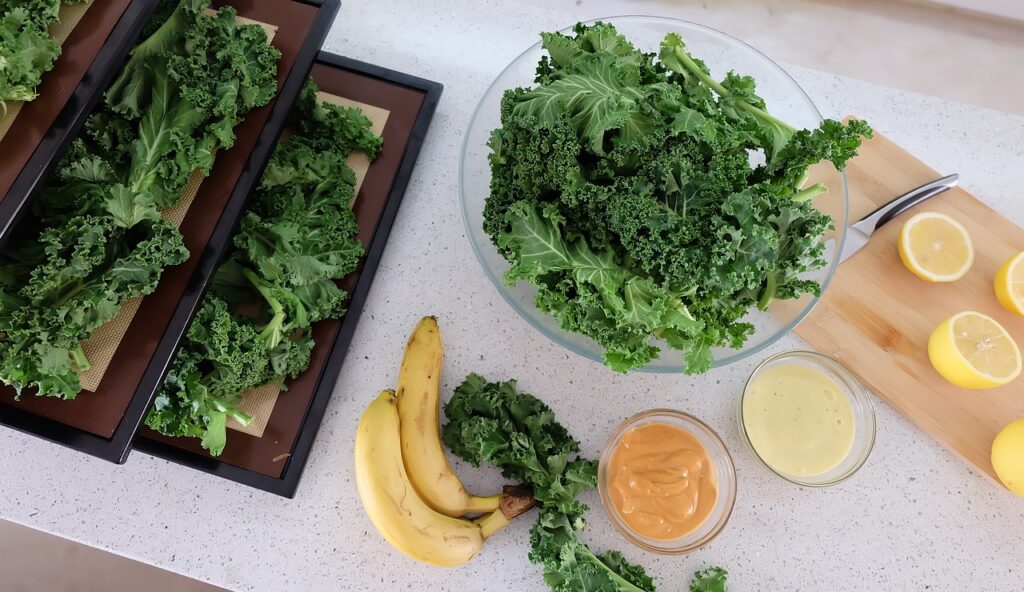The raw African shea butter is powerful and useful fat that has been in existence for many decades. I have known the Shea butter to be a magical oil that possesses healing and protective property hence one item to always have available in the household at its unrefined state.

Introduction
The African raw butter is a native natural oil generated from processing African Shea nuts. This powerful plant-based product is well known to be highly valuable primarily manufactured in the western part of Africa in particular countries like Ghana, Burkina Faso and Nigeria.
Table of Contents
Raw African shea butter are extracted from shea nuts obtained from shea fruits harvested from shea trees also known as Bambara tree. This is usually achieved by harvesting a couple of shea nuts subjects to heating with shafts and oil separated for use.
This vegetable fat is usually creamy yellow or light ivory brown color in its natural state, with a nutty not so pleasant smell compared to fruit or vegetable generated oils. Raw African shea butter are highly rich in Vitamins and fatty acids which is considered useful for the human’s overall health.
Although some individuals consider this vegetable fat to be useful for cooking meals and dishes, it is most popular for its use in the external part of the body. Personally, I have never thought of using this in preparing a meal because of its not so pleasant smell, however back in West African history (Benin) has is to have been used for making traditional dishes. The raw african shea butter is popularly known as a skin care or hair care product providing a positive effect on the body.
Composition of the Raw African Shea Butter
One product I have consistently used daily in the past years is the Raw African shea butter, this is as a result of the enormous benefits I get from this locally made product. The below represents the properties of the amazing African shea butter.
Vitamins
The African raw shea butter is highly rich in varieties of vitamins that is beneficial promoting a positive outlook on the body. These vitamins are known to nourish and protect the skin provide a vibrant result on the skin and Hair.
The raw african shea butter is known for its richness in vitamin A which revitalizes the skin hence improving its texture and pigmentation. The vitamin E protecting the skin from radicals and environmental stressors hence acting as antioxidants to the body. The vitamin F also present aids hydration, moisturization and elasticity of the skin.
This vitamin generally improves the appearance and health of individuals providing a radiant look and by protecting and improving the skin and hair health.

Fatty acids
African shea butter is rich in a variety of fatty acids which include primarily the Oleic and Steric acids accounting for about 80% of the entire fatty acid components protecting the outer skin surface, hydrating and contributing to its texture and feel.
Other fatty acid components present in the raw african shea butter includes the palmitic acid and the Linoleic and arachidic acid adding to the emollient, hydrating, nourishing, and protective quality of the african shea butter.
Phytosterols
These are cholesterol like natural compounds found in plants, which help strengthen the natural skin state. They possess anti inflammatory properties which protects and soothe the irritation or discomfort from the inflammation of sensitive skins.
This property also ensures that the skin is protected from oxidative stress and premature ageing due to its antioxidant properties. This also helps alleviate conditions such as eczema, dermatitis.
Polyphenols
Just like in honey and Olive oil, the raw African shea butter contains the polyphenol which possesses a level of antioxidant properties protecting the body from the ultra violent rays of the sunlight and other environmental factors that can cause damage the skin health.
The polyphenol presents in raw african share butter is small compared to other oils, and other components like fatty acid and vitamins, however it still provides a great cover on individuals overall skin health.
Triterpenes
This provides anti microbial properties that helps to protect the skin against bacteria and fungi hence reducing the risk to harmful infections. Triterpenes also possess anti inflammatory and antioxidants properties reducing swellings, redness, or sores in the skin.
The triterpenes in shea butter contributes to its therapeutic value in managing individuals skin health.
Benefits of the Raw African Shea butter
The raw african shea butter is super beneficial oil to the human race, It is considered a core most haves in homes. The below indicates the exhaustive benefits of this powerful vegetable fat to the body. They include:

Wound Healing
Raw African shea butter promotes the healing of wounds as a result of its emollient properties that makes the wound area very soft and smooth. It helps reduces itching and dryness and prevent pain and discomfort during the healing process.
The triterpenes and phytosterols help reduce inflammations and swelling around the wound making the healing process easier and more tolerable to deal with. The collagens present in raw African shea butter promotes quick formation of tissues around the wound site leading to faster healing.
I personally have used shea butter occasionally on wounds as a result of home accidents and the healing process is some what soothing and faster compared to the use of some other organic product keeping the wound moisturized and protecting the wound from external irritation and pathogens.
Generally, the raw African shea butter promote the quick healing of wounds, however it is essential to consult the health care professionals for proper wound treatment especially for severe, large and infected wounds. The shea butter can be used along side every treatment provided by these professionals.
Hair and Scalp Nourishment
The raw African shea butter is a go to for not just the various hair types but also the scalp of humans. It deeply moisturizes and hydrates the hair and scalp preventing it from dryness, irritation and breakage hence making it healthy and nourished.
It helps cure scalp problems like dandruff and eczema due to its anti-inflammatory properties shielding the hair from excessive sunlight, harsh weather conditions and pollutions from the environment.
I personally use this on my hair, and I have visible result to attest to this power of the raw gift of nature. Raw African shea butter are most valuable in maintaining a health, fitness and strength the hair, keeping it bouncy, moist and well protected daily.
Anti Ageing Functionality
The Vitamin A and E in the Raw African shea butter help prevent free radicals that can add to skin ageing. It helps improve the skin tone and texture reducing the appearance of wrinkles and promoting intense hydration and skin elasticity.
It also fosters skin regeneration and repair healing all the damaged skin cells. Hence, giving you a flawless, radiant, and youthful complexion free of spots, hyperpigmentation, and blemish.
Scar Removal
One simple way to eliminate scars from the body is the use of the raw African shea butter, the application on affected area should be done religiously and consistently for about one to two months to see the magical effect on the affected area.
Although might not remove the scar completely it helps make them fade off and less noticeable. If you have concerns about a severe scar, it is still important to consult a dermatologist for personal advise and fast treatment options especially is the scar location is visible and keeps you uncomfortable.
Prevents Skin Dryness
The properties in the raw African shea butter keeps the skin hydrated. Hence preventing dryness and parches on the skin. It helps replenish the natural oils and lipids of the skin and restoring suppleness and elasticity of the skin.
The raw African shea butter helps relives dry, rough, and flaky skin preventing you from looking unkept or tacky.

Natural Skin Care product
The raw African shea butter is a natural skin product completely free from chemical and other skin care component that can provide immediate help but end up leading to future skin issues, damage or even severe cancers.
It is completely safe to use and sets you free from worries about resultant effects that could arise from the use of processed skin care products.
Massage and Therapy
Raw African shea butter is used in massage therapy for its nourishing and oiling effect on the body. They help repair and rejuvenate the skin during massage therapy making the making experience more relaxing and enjoyable.
Long lasting
Once the raw African shea butter is stored properly in a cool place is can last of a very long time, they can last for 2-5 years compared to some other skin care product which could expire in one or two years.
Refrigerating raw African shea butter can help extend its shelf life in areas of hot climate and keep this natural product in an airtight container can also ensure that its components are protected till usage.
Versatility
The raw African shea butter is highly known for its various uses on both the skin and hair when used in its natural state. There are also known for their use in the production of varieties of skin care products, hair creams, lip balms, cosmetic products like concealers, foundations, and others. They are also used in making massage products, sunscreens, and some bathing soaps.
Frequently Asked Questions
- What can I mix with shea butter to manage its not too pleasant nutty scent? Coconut oil, Jojoba oil, Olive oil and Avocado Oil.
- How should I store the raw African shea butter? This should be stored in a cool dry place between 10 and 20 degrees in order for the shea butter to maintain its nutrients.
- Is the raw African shea butter suitable for all skin types? Yes, however individuals with nuts allergies should exercise caution when it is to be used because of triggers from its nutty scents.
- Can I use shea butter as my primary sunscreen? Yes, however solely relying on this might not completely protect you from the sun. Hence a combination of shea butter and other sunscreen products is recommended.
- Can I apply shea butter on a surgery wound to heal and clear off scar? Generally, yes, however consult with your doctor to understand if there are other care alternatives that could provide faster and more beneficial healing to you.
- Does the use of the raw African Shea butter have any side effect on the body? No, as this is a plant based natural product with no chemical or additives included.
Related Article
What Is Shea Butter? 22 Benefits, Uses, and Products to Try (healthline.com)
Shea butter benefits: Face, hair, skin, scars, and more (medicalnewstoday.com)










